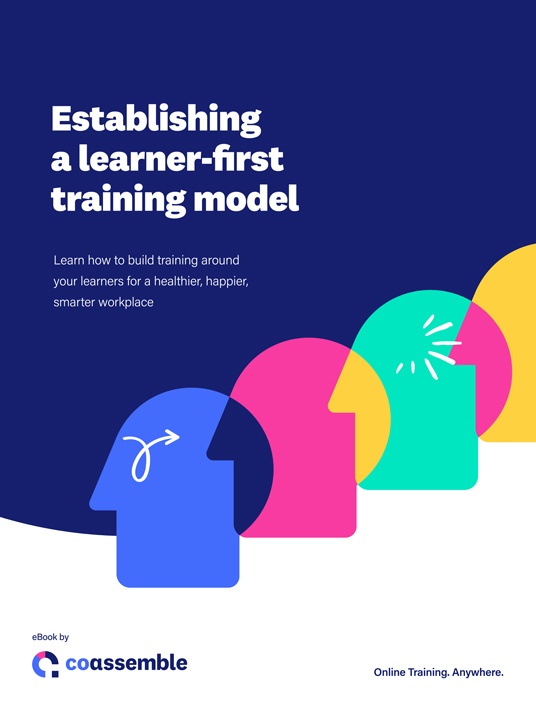How To Develop A Successful Onboarding Course For Your Employees’ First Day
Onboarding refers to the process of developing a program that trains newly hired or transferred employees with the skills, behaviour, and knowledge necessary to become effective contributors to business [1]. Therefore, onboarding is highly relevant to all businesses.

Why Is Onboarding Important?
A study by Gallup has found that only 12% of employees feel that their business effectively onboard new employees [2], meaning that some businesses drastically underestimate the importance of onboarding.
Businesses without a structured onboarding program can potentially end up with two major risks:
- An increased risk of staff churn. Staff who churn are estimated to cost between 6-9 months of their salary [2].
- A longer ramp-up time for new hires. Ramp up times refer to the amount of time a new employee takes to perform at their expected level. Longer ramp-up times drain resources as your existing staff will need to spend excess time training recruits.
Studies have found that a well-structured onboarding program has been found to increase staff retention 68% [3] and reduces the average time spent training employees by 40% [4].
Onboarding Before The First Day
By switching from a manual to online learning, employees can start their onboarding process at home, at the office or even on their daily commutes. This new way of training allows onboarding to start before the employee’s first day at the office.
Let’s take a look at what makes up a truly effective ‘pre-first day’ onboarding course:
1. Get The Boring Stuff Out Of The Way
Traditionally, there has been a gap in interaction with new hires between HR sending out the offer letter, to the new hire’s first day. This gap is the perfect opportunity to get some passive learning out the way and acts as preparation for your new staff before they get to the office.
Administration documents (like financial details and ‘about you’) and policies (like a code of conduct) can be added into your online course along with some information about the office including where they can find coffee, parking, their managers, etc.
Your new hire will come to the office on the first day, ready to go, so you can focus on what really matters.
2. Give Your New Hires A Chance To Introduce Themselves To The Team
Great onboarding is not just about going through administration documents and policies, but your new hires want and need to feel connected to your team.
It’s great to introduce your new hire to their co-workers, managers, and leadership so that they begin to feel familiar with the businesses inner workings. However, in some businesses, this is not physically possible, but, there are alternatives such as video introductions from leadership to new hires or even videos about the company’s workplace culture.
It is important for new hires to understand the company’s roots and core values, which is best learned through those that live and breath it, your own people.
3. Design For Mobile
Mobile learning is gaining preference as it offers so much flexibility for employees, in comparison to traditional learning methods. Mobile learning allows your employees to learn when it suits them individually, leading to a more effective and engaging learning experience.
As mentioned previously, when your learning is mobile optimised, employees can access your training materials anywhere as long as they have an internet connection. A study by Brandon Hall Group found that 70% of employees preferred to train via mobile, whilst they are being mobile [5].
Say goodbye to scheduling training sessions in the office, and say hello to your virtual classroom.
4. Employ A Learner-First Training Model
A study by Qualtrics found that 31% of trainers faced challenges when it comes to learner engagement levels [6].
A learner-first training model [8] is being adopted by companies around the globe to increase the success of their onboarding programs. In short, this model is focused on the most important part of the learning strategy – the learner. When training is designed with the learner as the focus, trainers will see more engaged learners, better training results, and more efficient, happier workplaces.
The learner-first training model is an effective way to create onboarding programs that are proven to provide a powerful and meaningful training experience as it focuses on the learners themselves.
Putting It All Together
Here’s a short online onboarding course that puts all the information above together.
The online course introduces the company, with engaging multimedia such as video, and keeps content short and sharp. It has a policy download, which allows new hires to easily get their admin out of the way, and ends with a smart quiz that is shared with the company to drive a strong cultural fit.
This course includes an email integration that shares the final section’s quiz results with the rest of the company, automating the introduction process and reducing the load on the HR department.
Click through, and see for yourself what a good onboarding course looks like.
References:
[1] Onboarding (https://trainingindustry.com/wiki/workforce-development/onboarding/)
[2] Why the Onboarding Experience Is Key for Retention (https://www.gallup.com/workplace/235121/why-onboarding-experience-key-retention.aspx)
[3] No Second Chance to Make a First Impression: the Power of Onboarding
[4] Hudson Institute of Coaching
[5] Brandon Hall Group
[6] Qualtrics 2018
[7] Establish a Learner-First Training Model – eBook by Coassemble

